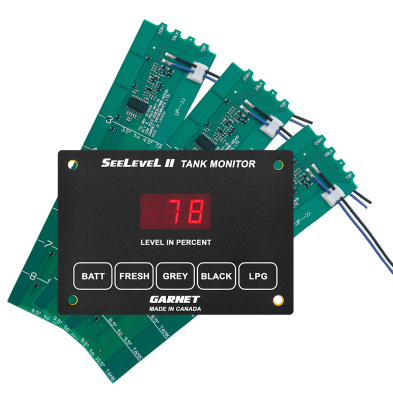That sinking feeling when your RV air conditioner starts blowing warm air on a sweltering day is something most of us know all too well. It’s frustrating, to say the least. But before you jump to conclusions about a catastrophic failure, take a breath. The good news is that the culprit is often simpler than you’d think.
In my experience, many cooling failures aren’t due to a dead compressor. More often, they’re side effects of where you’re parked, the power you’re getting, or a simple maintenance task you might have overlooked.
Why Your RV AC Suddenly Stopped Cooling

Instead of immediately thinking “replacement,” a logical diagnostic approach can save you time, money, and a whole lot of stress. Let’s walk through the most common reasons your AC might be on the fritz.
For instance, a dusty campsite can wreak havoc on your AC system. I’ve seen rooftop condenser coils become completely caked in dirt after just a few days in a dry, windy spot. When that happens, the unit simply can’t release heat effectively, and the whole cooling cycle just grinds to a halt.
Common Causes of Cooling Failure
Getting a handle on the most frequent culprits behind an RV air conditioner not cooling helps you zero in on the problem fast. Before you even think about grabbing your tools, let’s consider these usual suspects:
- Airflow Restriction: Dirty return filters or clogged evaporator/condenser coils choke air. Start here: replace the interior filter (RV A/C Filters) and clean the coils (No-rinse coil cleaner).
- Electrical Problems: Low campground voltage keeps the compressor from starting. Use an EMS/surge protector with voltage display (EMS Surge Protectors).
- Thermostat Glitches: A mis-set or failing thermostat can block cooling calls. See replacements: RV Thermostats.
A prime example of airflow restriction is a dirty filter. Your RV air conditioner absolutely relies on clean filters and coils to work efficiently. As soon as dust and debris build up, that airflow is drastically cut down, leading to warmer air coming from the vents even when the fan is blowing.
Pro Tip: Always, always start with the basics. More than 50% of the cooling issues I’ve fixed were solved by cleaning a filter, thawing an iced coil, or resetting a breaker.
Quick Diagnostic Checklist for a Failing RV AC
To help you narrow things down before you climb on the roof, I’ve put together a quick checklist. This little table is your starting point—just match your symptoms to the most likely cause and the first step to take.
| Symptom | Potential Cause | First Action to Take |
|---|---|---|
| Fan runs but air is warm | Clogged air filter or dirty coils | Replace filter; clean coils with coil cleaner. |
| AC cycles on and off rapidly | Low voltage from power source | Verify ≥ 108V with an EMS (EMS Protectors). |
| Unit hums but won’t start | Failed start/run capacitor | Inspect/replace capacitor (Start Capacitors). |
| No power to unit | Tripped breaker | Reset RV breaker & pedestal breaker; inspect shore cord (Power Cords/Adapters). |
Start with These Simple 5-Minute Checks

When your RV air conditioner decides to take a vacation in the middle of a heatwave, it’s easy to jump to the worst conclusion. But before you start pricing new units or scrambling onto the roof, take a breath. More often than not, the fix is simple—no tools required.
Confirm Your Power Connection
Verify the pedestal breaker, re-seat your shore cord, then check your RV’s breaker panel. Protect the rig and see real voltage with an EMS surge protector. If you run on marginal power often, consider a soft-start module to lower startup current: A/C Soft Starts.
Verify Your Thermostat Settings
- Mode: Set to Cool/Auto (not Fan-only).
- Setpoint: At least 5°F below room temp.
- Batteries/Reset: Replace batteries or power-cycle the stat. Need an upgrade? RV Thermostats.
Getting Air Moving Again for Maximum Cooling Power
Poor airflow is the #1 reason an RV air conditioner is not cooling. Restore the path: new filter, clean evaporator, clean rooftop condenser, and seal duct leaks.
Start with the Indoor Evaporator Coils
Kill power at the breaker. Remove the interior shroud, replace the return filter (filters), and clean fins with a no-rinse evap coil cleaner. Go with soft strokes; if fins are bent, use a fin comb.

Head Up Top to Clean the Condenser Coils
Remove the rooftop shroud, clear debris, then clean from inside-out if possible to push dirt out of the coil. Straighten bent fins with a fin comb. If your shroud is cracked, replace it to keep airflow correct (A/C Shrouds).
Diagnosing Common Electrical Failures
If cleaning didn’t solve it, move to electrical. The usual suspect is the start/run capacitor.
The Frequent Offender: A Bad Start Capacitor
Disconnect all power (shore, generator, batteries). Inspect the capacitor under the rooftop shroud for bulging or leaks. Replace with the same µF/voltage rating (start capacitors). Want better starts on weak power? Add a soft-start.
Safely Testing and Replacing the Capacitor
Discharge with an insulated screwdriver, note wiring (photo), and verify with a multimeter (±10% of rated µF). While you’re up there, check the fan motor and blower wheel for free spin; replace if seized (fan motors).
Making the Call: Repair or Replace Your AC Unit

Age, repair cost, and cooling performance drive the decision. If repair exceeds ~50% of a new unit or the system can’t hold a 15–20°F drop, start pricing replacements: Coleman-Mach, Dometic, RecPro. Don’t forget roof sealant when swapping units (self-leveling lap sealant).
Repair vs. Replace Decision Matrix
| Factor | Guideline to Repair | Guideline to Replace |
|---|---|---|
| Age of Unit | < 8 years | > 10–12 years |
| Repair Cost | < 50% of new | > 50% of new |
| Performance | Holds 15–20°F delta | Can’t maintain 15–20°F |
| Breakdown Frequency | 1–2 issues total | Recurring seasonal failures |
| Energy Use | Normal draw | Notably higher draw |
Answering Your Top RV Air Conditioner Questions
Why Is My AC Running but Not Blowing Cold Air?
Usually airflow: change the filter, thaw frozen coils, clean evap/condenser. Parts to keep on hand: filters, coil cleaner, fin comb.
Can Campground Power Cause Cooling Problems?
Yes—low voltage is common. Use an EMS surge protector. If voltage is marginal, a soft-start helps compressors start without tripping.
How Do I Know if My Thermostat Is the Problem?
Confirm mode/cool setpoint, replace batteries, reset. If still flaky or unresponsive, swap the stat (RV thermostats). For Coleman-Mach or Dometic control boxes, match model families when upgrading.
Preventive Maintenance: Keep It Cold All Season
- Monthly: Rinse rooftop condenser; vacuum interior return grille; replace/clean filter (filters).
- Before Trips: Verify pedestal voltage with EMS; inspect shore cord ends (cords/adapters).
- Annually: Deep-clean evap & condenser (cleaner), straighten fins (fin comb), reseal around A/C gasket with self-leveling sealant.
- Upgrade Options: Add a soft-start for weak power parks; replace noisy shrouds (shrouds).
Need parts fast? We stock filters, capacitors, soft-starts, EMS surge protection, coil cleaners, shrouds, complete A/C units, and sealants. Call, chat, email, or text the team at RVupgrades.com and we’ll match the exact parts for your Coleman-Mach, Dometic, or RecPro setup.
AC Troubleshooting Kit — Essentials
Everything you need to diagnose and restore cooling fast: airflow, power quality, safe starts, and critical spares.



















